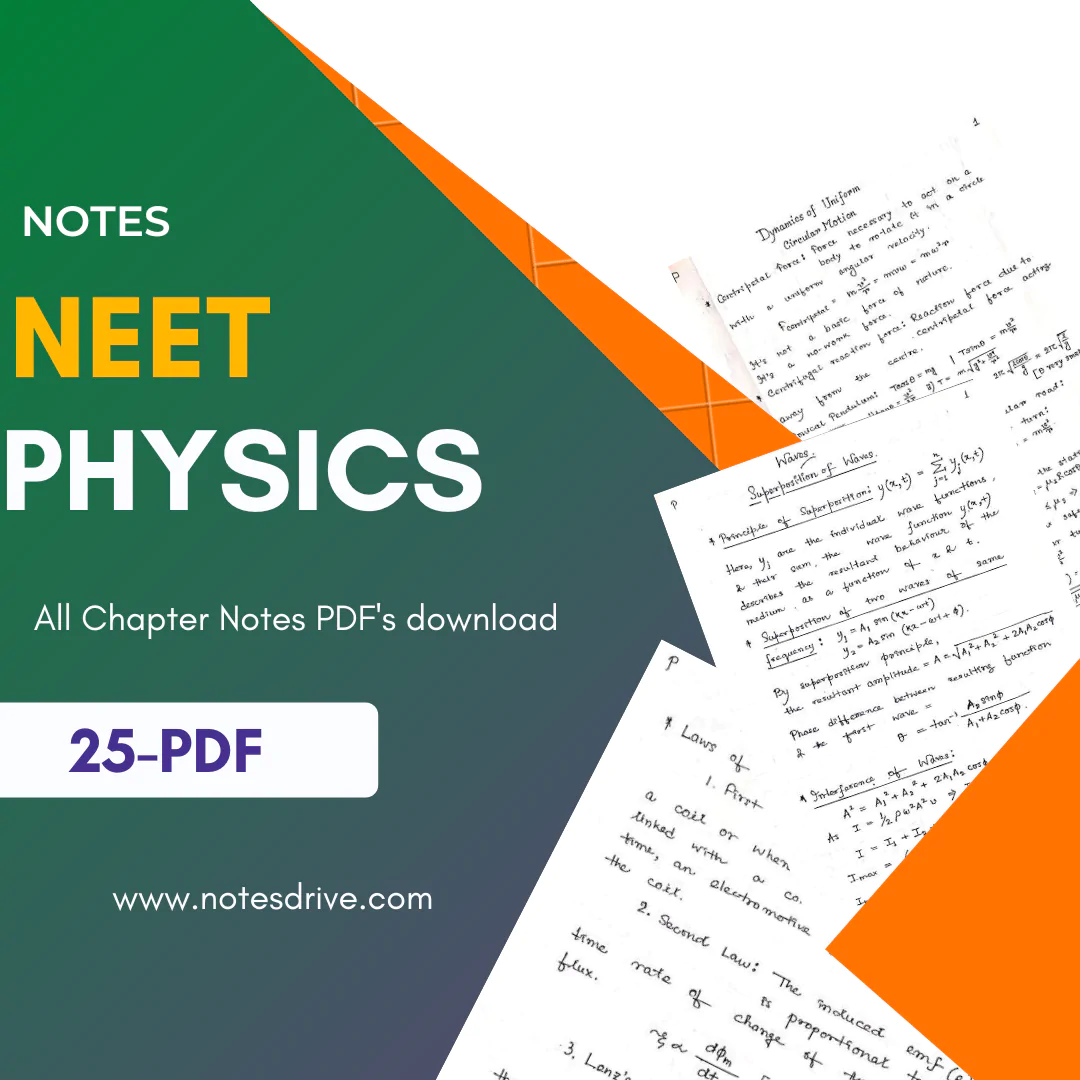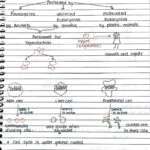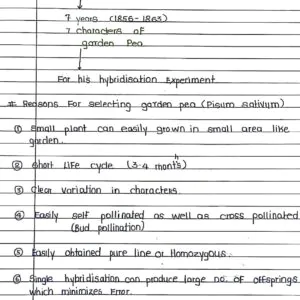₹ 75.00Original price was: ₹75.00. ₹ 21.00Current price is: ₹21.00.
Notes Name- Photosynthesis in Higher Plant
Subject – Biology
Class – 12th
Total Pages: 55 Pages
Total Size: 10 MB
File Format: PDF (Portable Document Format)
Language of the Notes: English
Format: PDF (Portable Document Format)
Notes Type: Handwritten Notes
Description
Description
Definition: Photosynthesis is the process by which green plants, algae, and some bacteria convert light energy into chemical energy, stored in glucose.General Equation: 6CO2+12H2O+light energy→C6H12O6+6O2+6H2O6CO_2 + 12H_2O + text{light energy} rightarrow C_6H_{12}O_6 + 6O_2 + 6H_2O 6 C O 2 + 12 H 2 O + light energy → C 6 H 12 O 6 + 6 O 2 + 6 H 2 O
2. Structure of Chloroplast
Chloroplast: The site of photosynthesis in plant cells.
Double Membrane: Outer and inner membranes.Stroma: Fluid-filled matrix inside chloroplasts.Thylakoids: Membrane-bound structures within the stroma, stacked to form grana.Grana: Stacks of thylakoids.Lamellae: Connect grana.Photosynthetic Pigments: Chlorophyll a, Chlorophyll b, Carotenoids.
3. Light Reaction (Photochemical Phase)
Occurs in Thylakoid Membranes. Photosystems:
Photosystem I (PS I) Photosystem II (PS II)
Process:
Absorption of light energy.
Water splitting (Photolysis) in PS II: 2H2O→4H++4e−+O22H_2O rightarrow 4H^+ + 4e^- + O_2 2 H 2 O → 4 H + + 4 e − + O 2
Electron Transport Chain (ETC)
Formation of ATP (Photophosphorylation) and NADPH.
4. Dark Reaction (Calvin Cycle/Biosynthetic Phase)
Occurs in Stroma. Three Phases:
Carboxylation: CO_2 is fixed into a stable intermediate. RuBP+CO2→2×3−PGAtext{RuBP} + CO_2 rightarrow 2 times 3-PGA RuBP + C O 2 → 2 × 3 − PG A Reduction: ATP and NADPH from light reactions are used to convert 3-PGA into G3P.Regeneration: G3P is used to regenerate RuBP, allowing the cycle to continue.
End Product: Glucose.
5. C_4 Pathway (Hatch-Slack Pathway)
Occurs in C_4 plants like maize, sugarcane. Anatomy: Kranz anatomy (specialized leaf structure).Steps:
Mesophyll Cells: CO_2 is fixed into a 4-carbon compound (OAA) by PEP carboxylase.Bundle Sheath Cells: OAA is transported and decarboxylated to release CO_2 for the Calvin cycle.CAM Pathway (Crassulacean Acid Metabolism)
Occurs in succulent plants like cacti.
Adaptation to arid conditions.
Process:
Stomata open at night, CO_2 is fixed into organic acids.
Stomata close during the day, CO_2 is released from organic acids for the Calvin cycle.
7. Factors Affecting Photosynthesis
Light Intensity: Rate of photosynthesis increases with light intensity up to a certain point.
Carbon Dioxide Concentration: Higher CO_2 levels increase the rate of photosynthesis.
Temperature: Optimal temperature range for enzyme activity.
Water: Essential for photolysis in light reactions.
Chlorophyll Content: More chlorophyll increases the plant’s ability to capture light energy.
8. Significance of Photosynthesis
Primary Source of Energy: Converts solar energy into chemical energy.
Produces Oxygen: Essential for respiration in aerobic organisms.
Carbon Cycle: Fixes carbon dioxide into organic molecules.
9. Comparison of C_3, C_4, and CAM Pathways
C_3 Pathway: Most common, direct Calvin cycle, inefficient under high light intensity and temperatures.
C_4 Pathway: Adapted to high light intensity and temperatures, separates initial CO_2 fixation and Calvin cycle.
CAM Pathway: Adapted to arid conditions, temporal separation of CO_2 fixation and Calvin cycle.
























Reviews
There are no reviews yet.